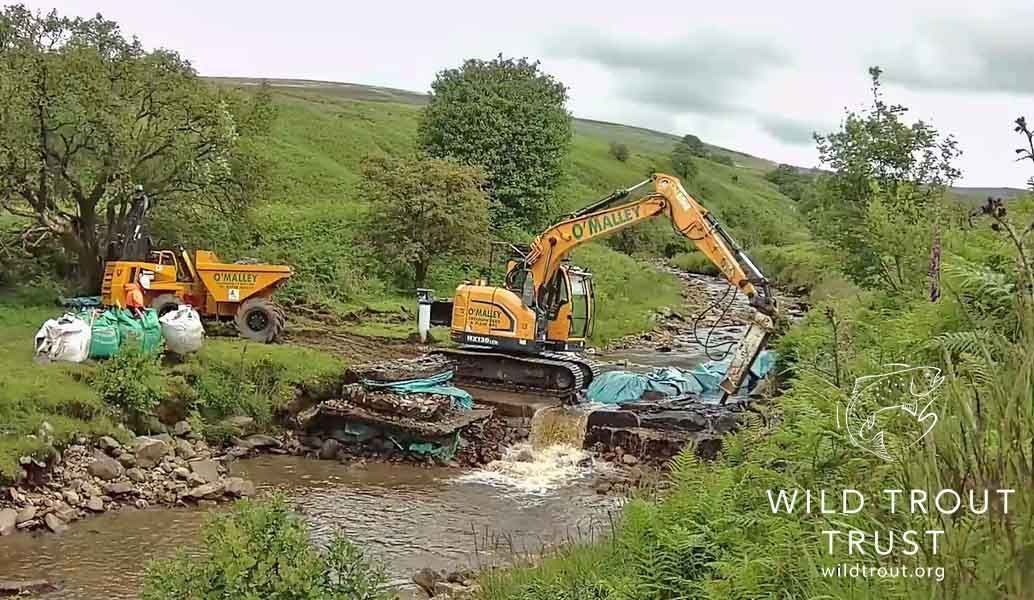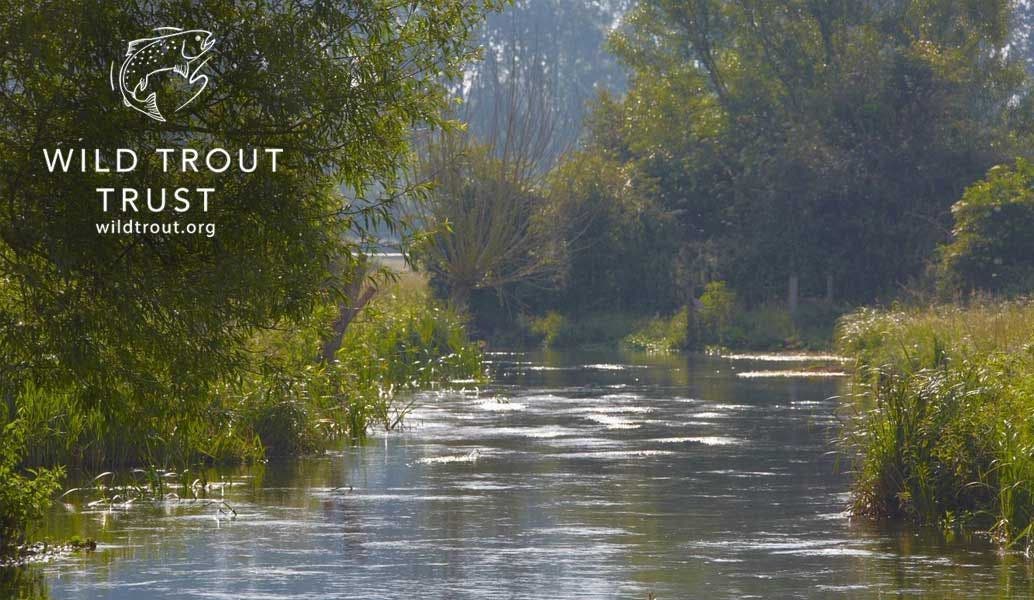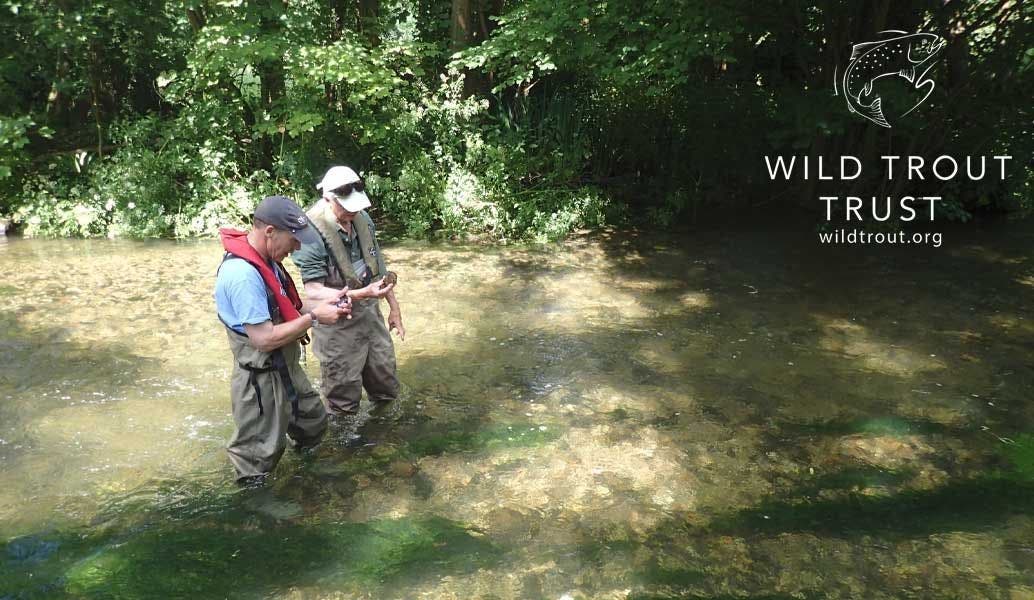All species of freshwater fish – not just trout and salmon – need to be able to migrate freely within their native river systems to fulfil different needs at different times of their life cycles. This means that removing man-made obstructions like dams (or weirs, as we’ll call them here) whenever possible is one of the most important things we can do to restore the health of our rivers.
The diagrams below are illustrations of how weirs damage the natural functioning of a river – fragmenting its course into isolated ‘stairsteps’ of habitat, and making the impounded reach upstream of each weir silty and lacking in the kind of variety that’s so vital for most species to thrive.
* Weirs can often create 'weir pools' which can provide good holding habitiat but at the expense of overall pool/riffle abundance.
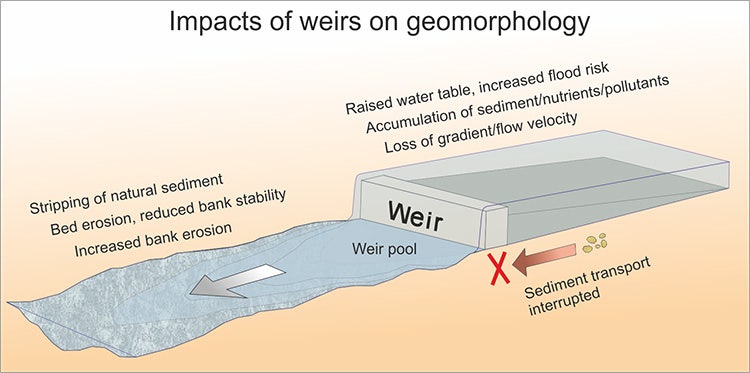

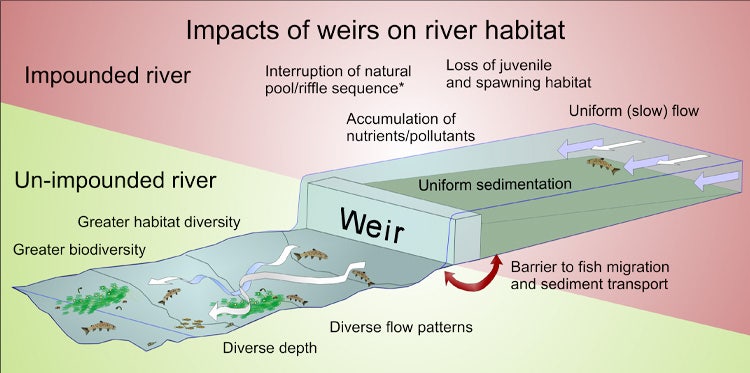

REDUNDANT WEIRS IN CUMBRIA
In the case of the River Gelt in Cumbria, where we recently worked with the Environment Agency (EA) to take out two redundant water company weirs on the Old Water and New Water tributaries near Castle Carrock, eventual removal of these structures had actually been specified by the landowners when they gave consent for them to be built, decades ago!
The project started with a full assessment and options appraisal by the river restoration consultants Dynamic Rivers. After this, our Conservation Officer Gareth Pedley worked with them to steer the process through to removing the weirs completely, in September last year, and renaturalising the channels with complex habitat up- and downstream. Plans for both sites also included scope for the channels to continue adjusting naturally in the course of future high flow events.
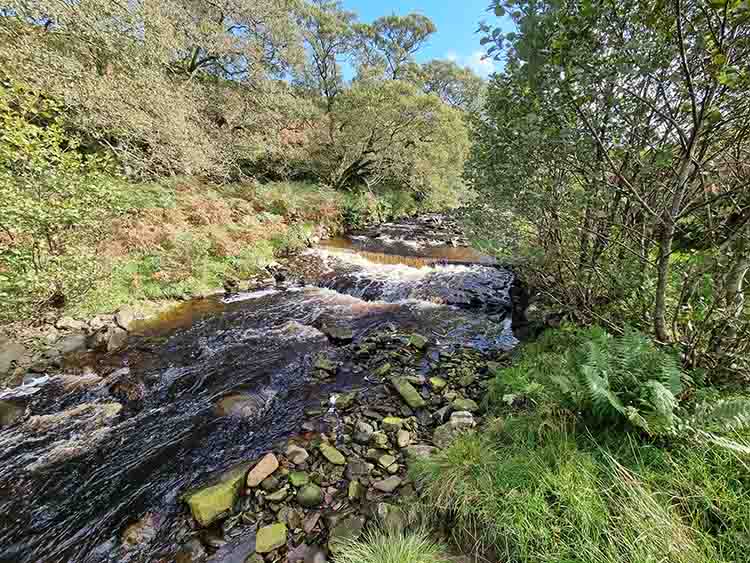

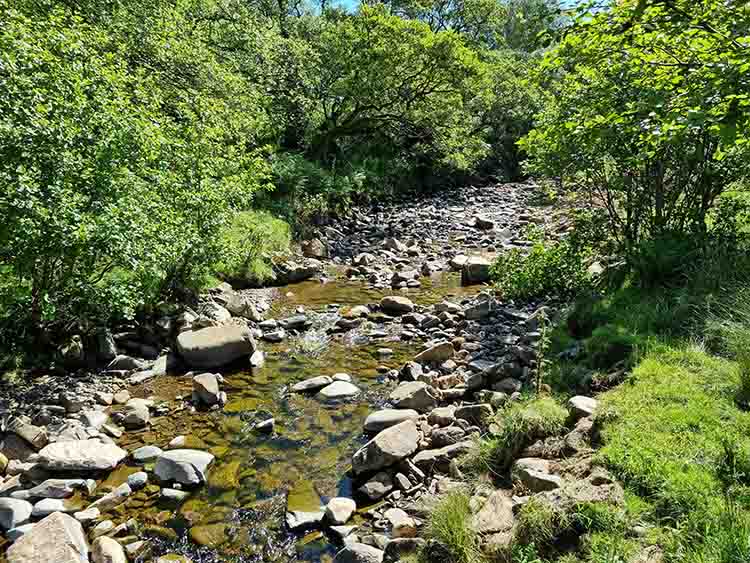

SMOOTH OPERATORS AT WORK
When it comes to removing weirs, even the best laid plans can sometimes encounter problems. In this case, however, we were relieved and delighted that the process went very smoothly.
To ensure that our contractors and their machinery could work freely, we conducted a pre-works fish rescue operation: this revealed healthy numbers of trout around both weirs, and we have no doubt that these fish will already have recolonised their lovely new habitat. Downstream of each weir, there’s still a water company intake which also helped to act as secondary sediment controls, limiting the impact of the fine sediment mobilised by breaking the weirs apart.
Work on both weirs was just about completed within the two-week timeframe that we’d planned, with only a short delay caused by high water. Now, only two months later, it’s hard to see any signs that the weirs were ever there – the best possible result for this successful partnership project!
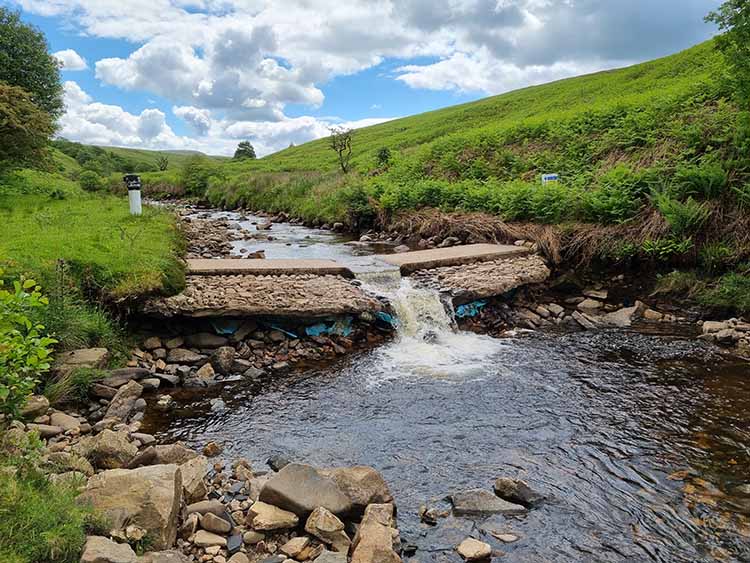

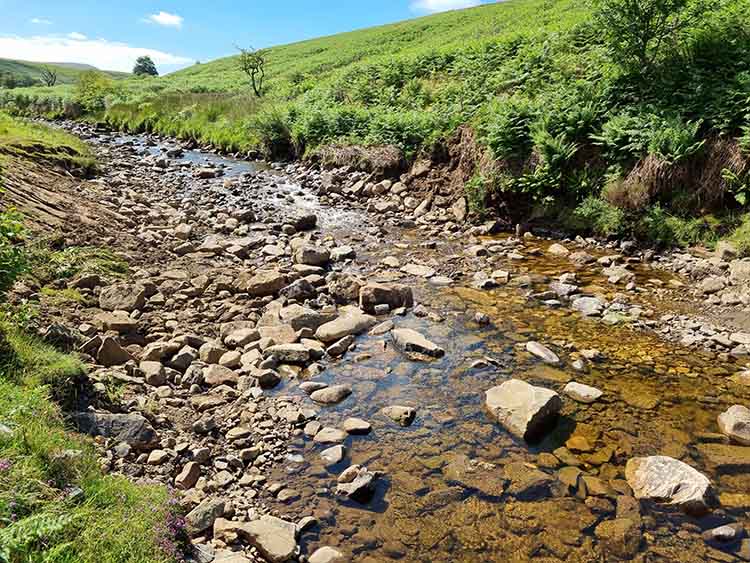

WTT’s team of Conservation Officers are always looking for opportunities to help rivers flow freely again by removing weirs and other obstructions.
If there’s a redundant weir on a stretch of river which you manage or fish, please get in touch with us, and we’ll see what we can do to help.
Visit the Wild Trout Trust website at www.wildtrout.org to find out more.

